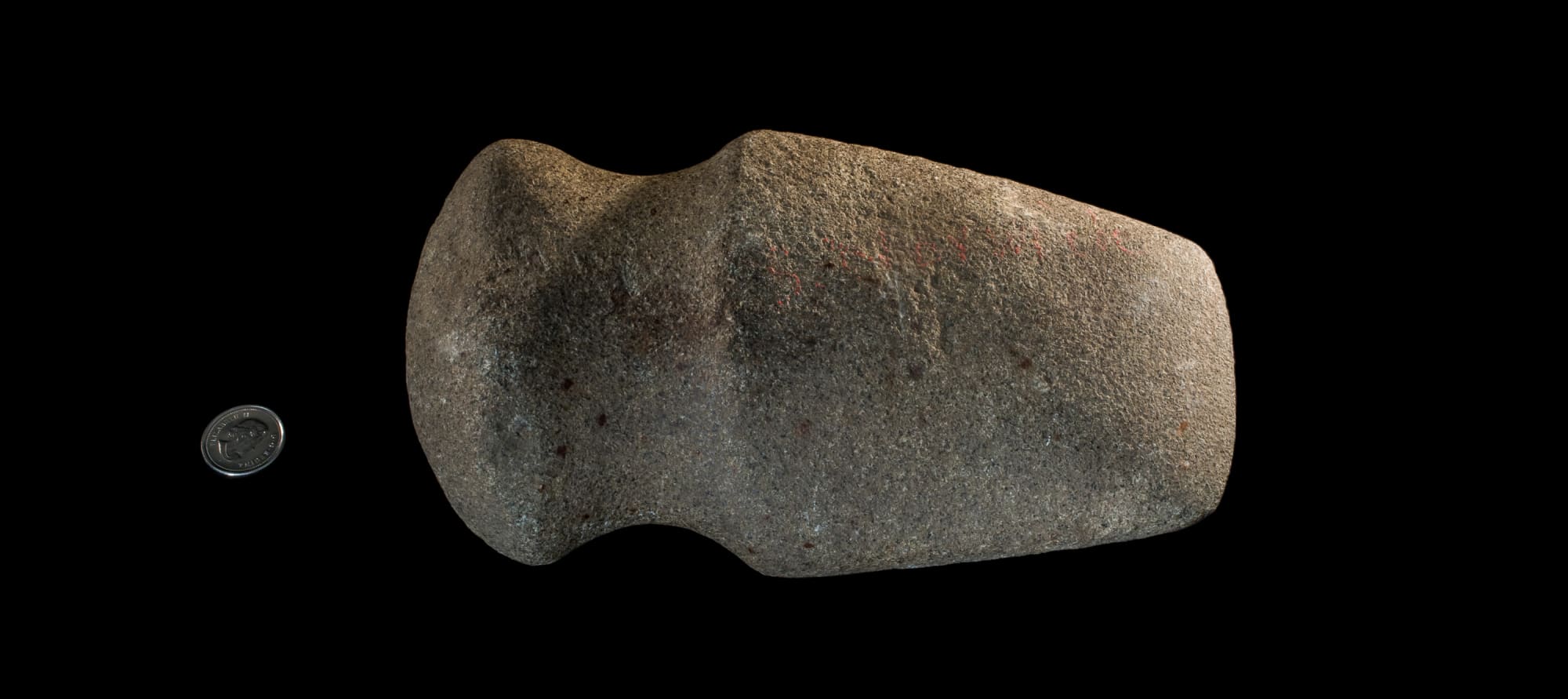
Grooved Axe - 004.99.2793
The arrival of forests and disappearance of large herd animals would have decreased band mobility and increased the opportunity to work wood for items such as tent poles, canoes and paddles, and hand tools. This, in turn, would have changed the focus of the toolkit away from a few, lightweight, specialty and multifunction tools and facilitated the development of larger, heavier, more robust tools such as this grooved axe head. While toolstone such as chert can be used for such purposes, it is harder to find and transport in large pieces and is not really necessary for working soft wood. Instead, locally available cobbles of various relatively hard rock can be fashioned into serviceable tools by grinding instead of chipping. The grinding would be done with slightly harder, coarse-grained rocks such as sandstone. This method of shaping stone allowed for a wider variety of design choices, including raw materials, size, shape, and functional elements such as bits (the cutting end), polls (the butt end), and hafting features, such as the groove carved around this axe head to help bind it to a wooden handle.
 Celts
Celts
 Re-worked tools
Re-worked tools